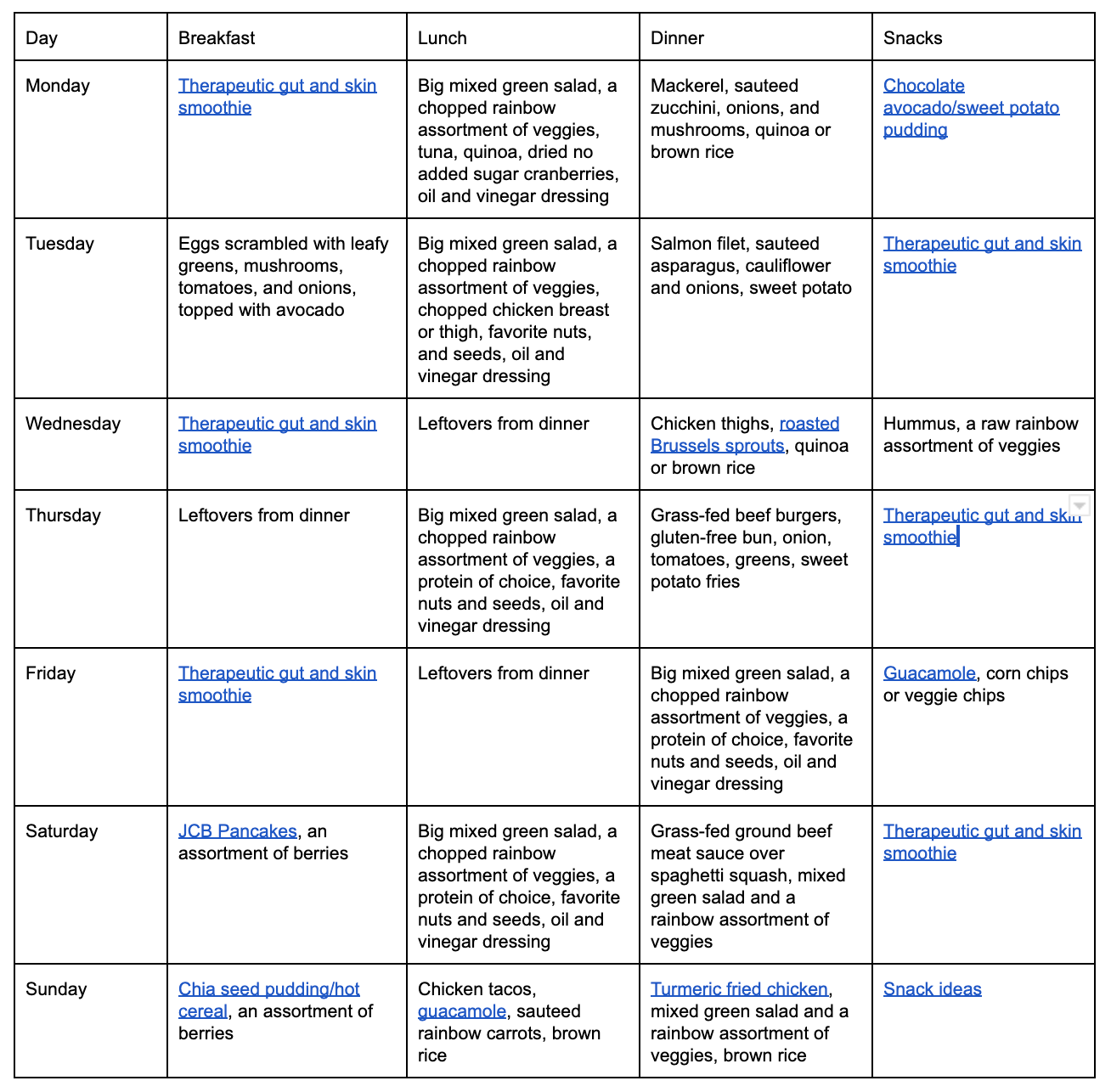The Dairy And Gluten Dilemma: A Balanced Perspective
Navigating dietary choices for children with skin problems can be daunting, especially when it comes to gluten and dairy. Both are often labeled as inflammatory foods, sparking debates about whether they can be in the diet, or not. So, let’s break it down.
GLUTEN: TO INCLUDE OR NOT TO INCLUDE?
For those with celiac disease, known gluten allergies, or sensitivities, the answer is simple: gluten must be avoided. However, for others, the situation isn't so clear-cut. While some children might have an adverse reaction to gluten, many do not show any immediate signs of a problem. Which doesn’t necessarily mean there isn’t one.
In my opinion, it’s wise to limit gluten in your child’s diet. The reality is that gluten offers no nutritional value and is linked to gut hyperpermeability (leaky gut), which is already a problem for people with chronic skin issues.
Also, during digestion opioid peptides are made when gluten gets broken down. These peptides can get out of the gut, especially when it’s leaky, into the bloodstream, and then bind to opioid receptors throughout the body (including in the brain), and literally can become addictive. If your child seems like they can’t live without gluten, this might be why.
That said, I don’t believe in fostering an overly restrictive environment. If your child doesn’t seem to react overtly to gluten, if you’re out and about and your child wants a cookie or a pretzel, it’s okay to indulge now and then. We all should be able to do that! Also, as long as there isn’t a diagnosed allergy to it, it should be introduced to your child along with the other common allergens when they start eating solids to help prevent developing an allergy to it.
At home, however, and when you’re in charge of the food, opt for gluten-free alternatives. There are numerous gluten-free grains and substitutes that are options, and provide essential nutrients without the potential health risks, making it easier to create a balanced diet without gluten as a staple. Examples include quinoa, brown rice, buckwheat, millet, sorghum, amaranth, oats, teff, corn, chia seeds, flaxseeds, coconut flour, almond flour, rice flour, arrowroot, tapioca, farro, spelt, chickpea, and lentil.
DAIRY: A DOUBLE-EDGED SWORD
Like gluten, conventional cow’s milk can also be inflammatory. Also, most people are lactose intolerant! So, do we really need children consuming cow’s milk? While it should be introduced to your child along with the other common allergens as long as there isn’t a diagnosed allergy to it in order to prevent the development of one, I would argue not.
And get this, similar to what happens with gluten, during digestion the A1 beta-casein protein in cow dairy releases a peptide that acts like an opioid, and with leaky gut, it gets into the bloodstream and binds to opioid receptors. This means that dairy can also literally be addictive!
A2 dairy doesn’t do this.
Raw dairy is a topic of much debate, but as a healthcare professional, I don’t recommend it due to potential health risks.
Once your child starts eating solids, it’s essential to shift the focus away from liquids as a primary source of nutrition (wean off the milk!).
Worried about calcium? No stress! Leafy greens, nuts and seeds, soybeans, canned salmon, and sardines are great sources. But here’s the catch: it’s not just about calcium. Your child needs enough vitamin D for calcium absorption and vitamin K to make sure calcium goes to the right places.
Worried about protein? There are plenty of other animal or plant-based options to keep your kiddo's protein intake on point.
On the flip side, because I’m not a practitioner that fosters an overly restrictive environment, if your child doesn’t have an allergy to dairy, and if they don’t show any adverse effects, small amounts here and there should generally be fine. Still, it’s essential to monitor how your child reacts.
Dairy products like yogurt, cheese, cottage cheese, and even a little ice cream can certainly have a place in a child's diet, if they tolerate it.
You can quote me on this, “No one needs to sit around and drink glasses of cow’s milk [or eat gluten for that matter] all day long (or at all really).”
There’s no shortage of dairy alternatives available—goat milk can be easier for some children to digest, and almond, rice, oat, coconut, soy, hemp, and cashew are options. These can easily supplement your child’s diet, especially if you’re concerned.
ELIMINATING GLUTEN AND DAIRY FROM THE DIET
If you want to experiment with removing them from your child’s diet, don’t go cold-turkey. They might actually have withdrawal symptoms. It’s better to ease into it. Pick either gluten or dairy to start:
Week 1: Remove it from breakfast.
Week 2: Remove it from breakfast and lunch.
Week 3: Remove it from breakfast, lunch, and dinner.
Week 4: Remove it from all meals and snacks.
Then follow the same process for the other.
CONCLUSION: FINDING BALANCE
In conclusion, both gluten and dairy are inflammatory, but that doesn’t mean they must be completely eliminated from every child’s diet. Take your child’s unique needs and tolerances into account. If they are in your child’s diet and don’t seem to affect them negatively, focus on moderation and observation. Allowing occasional consumption is perfectly reasonable. However, prioritizing whole, nutrient-dense foods should always be the goal.
Ultimately, the key is to create a balanced, nutritious diet that supports your child's body, and their skin! Being mindful of what goes on their plates is a good place to start to help your child thrive. I hope this perspective helps guide your dietary decisions!









